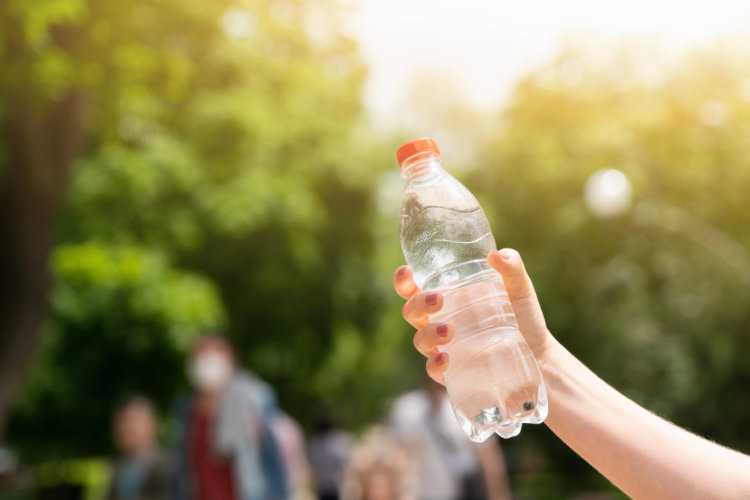Bottled Water in the Heat: What You Don’t See Could Harm You
Bottled water has become an inseparable part of modern life. From compact bottles carried on the go, to office reserves, to a quick purchase at the convenience store, each offers a sense of ease and safety. Its sheer ubiquity has made many people almost entirely dependent on bottled water, rarely questioning its journey, storage conditions, or the hidden risks behind its transparent plastic walls.
How long has the bottle you are holding traveled? Where was it stored? Under which scorching sun did it sit before reaching your hand? We can never truly know. And it is precisely this “not knowing” that poses the greatest danger.
Perhaps drinking from a plastic bottle left in a hot car once or twice won’t create obvious harm. But when the habit repeats daily, your body quietly accumulates microplastics, nanoplastics, and chemicals whose long-term effects science has only begun to uncover.
When Heat Triggers Hidden Dangers In Plastic Bottles
Research shows that when plastic bottles are exposed to high temperatures or ultraviolet rays, they begin releasing microplastics and harmful chemicals into drinking water. Most single-use bottles are made from polyethylene terephthalate (PET), a lightweight material with a tangled, net-like structure that traps molecules, including toxic compounds. Over time, these compounds diffuse into the water, and the process is significantly accelerated by heat and UV exposure.
A 2023 study confirmed this effect: when common plastics were exposed to 37°C and UV light, they released both microplastics and nanoplastics. In contrast, under cool, dark conditions (4.4°C), the release was almost negligible.
This means that in regions with hot, humid climates and extended periods of intense sunlight, such as Vietnam, the risk of plastic bottles leaching microplastics and harmful chemicals into drinking water is considerably higher. For consumers, this presents a serious health concern.
The Health Risks Run Deep
Microplastics and nanoplastics do not stop at the stomach. They can penetrate the liver, kidneys, heart, and even reach blood cells and breast milk. In addition, plastic bottles may contain compounds such as bisphenols and phthalates, which have been linked to endocrine disruption, neurological impacts, and reduced reproductive health.
Dr. Jaime Ross, a neuroscientist, cautions: “The risk from a single exposure may be low, but I would be concerned about repeated or chronic exposure.”
She also warns that high temperatures in cars not only increase the likelihood of microplastic leakage but also create a breeding ground for bacteria in opened bottles.
The crucial point is that these risks apply to all bottled water, because consumers can never be certain about the conditions of transportation, storage, or temperature exposure prior to purchase.
A Safer & More Sustainable Solution
To safeguard both health and the planet, experts recommend:
- Minimizing the use of single-use plastic bottles.
- Choosing glass or stainless-steel containers when carrying water.
- Most importantly, taking control of your water quality right at the source.
💧 With BWT’s advanced filtration and mineralization technology, you can enjoy water that is not only pure and safe but also enriched with essential minerals for your well-being while eliminating the hidden risks of microplastics and chemicals from plastic bottles.
This is more than just a solution for better health; it is a sustainable choice for the environment, replacing a reliance on bottled water that carries unseen dangers.
Source: VnExpress
- Log in to post comments

